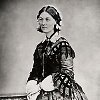If...[Alban] Berg departs so radically from tradition, through his substitution of a symmetrical partitioning of the octave for the asymmetrical partionings of the major/minor system, he departs just as radically from the twelve-tone tradition that is represented in the music of Schoenberg and Webern, for whom the twelve-tone series was always an integral structure that could be transposed only as a unit, and for whom twelve-tone music always implied a constant and equivalent circulation of the totality of pitch classes.
Page 98 - The Listening Composer
![If...[Alban] Berg departs so radically from tradition, through his substitution of a symmetrical partitioning of the octave for the asymmetrical...](https://img.libquotes.com/pic-quotes/v1/george-perle-quote-lba2s9m.jpg)
![If...[Alban] Berg departs so radically from tradition, through his substitution of a symmetrical partitioning of the octave for the asymmetrical...](https://img.libquotes.com/pic-quotes/v2/george-perle-quote-lba2s9m.jpg)
![If...[Alban] Berg departs so radically from tradition, through his substitution of a symmetrical partitioning of the octave for the asymmetrical...](https://img.libquotes.com/pic-quotes/v3/george-perle-quote-lba2s9m.jpg)
![If...[Alban] Berg departs so radically from tradition, through his substitution of a symmetrical partitioning of the octave for the asymmetrical...](https://img.libquotes.com/pic-quotes/v4/george-perle-quote-lba2s9m.jpg)



















